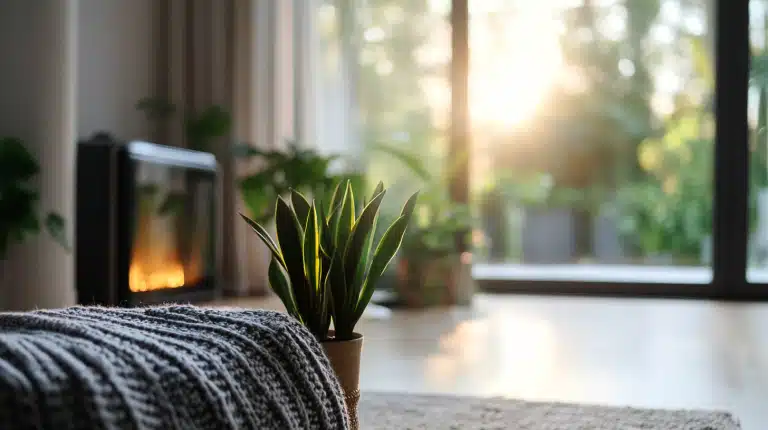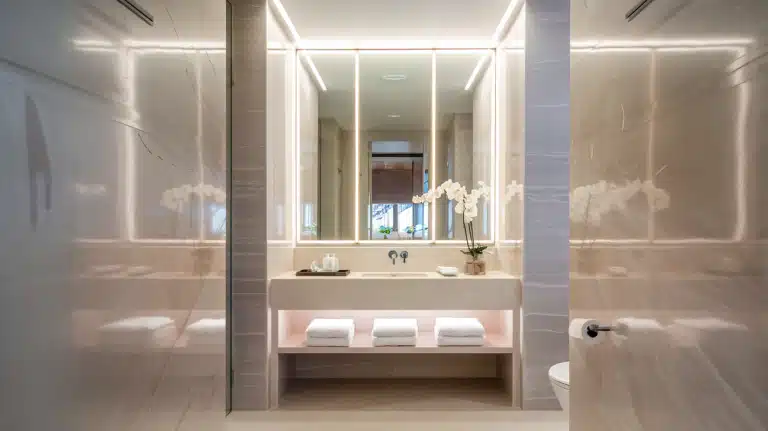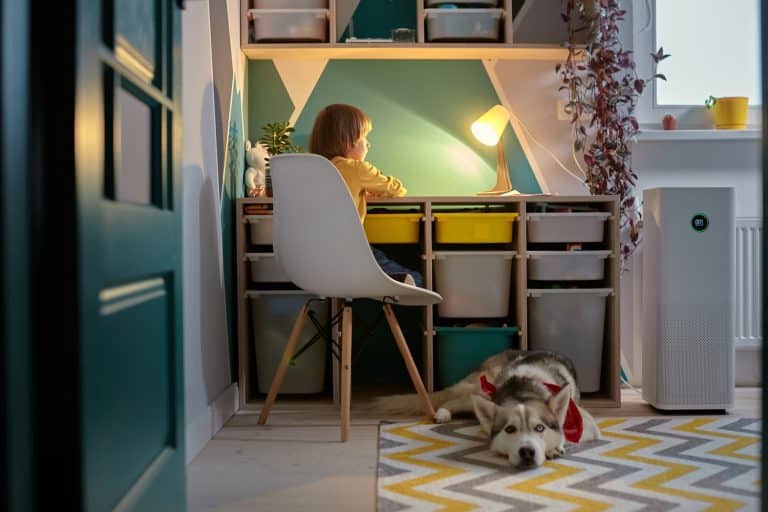Waterproofing Paints and Coatings
Think roundhouses, built with wooden or stone frames filled with mud, twigs, and dirt and capped with thatched grass roofs.
The earliest humans must have built these houses because they needed a place to shelter from predators and stay dry in storms.
A lot has changed since then, but people still build and live in houses to be safe from predators (more commonly the two-legged kind) and to remain dry in storms.
This must be the reason why waterproofing paints exist now.
They stem wall leaks and help houses and buildings fulfill one of the fundamental reasons for their existence: keep humans dry amidst rain, hail, and snow.
They protect houses and buildings from water damage, including:
- Rotting floorboards
- Spongy and warped surfaces
- Bubbling and peeling paint
- Discoloration of walls and ceilings
- Mold and mildew growth
A building can become weak due to constant, consistent, or continuous water ingress or penetration over time.
Applying waterproof paint is one of the strategies construction professionals use to prevent this from happening.
While they cannot permanently stop water from coming in, waterproofing paints can help do the following:
- Lessen the amount of water concrete can absorb
- Prevent water seepage through ceilings and walls
- Prevent structural corrosion due to water seepage and ingress damage
Waterproofing Paint Solutions
There are several types of construction waterproofing paint solutions. They are the following:
Acrylic Waterproofing Paints
Acrylic waterproofers are acrylic-based waterproofing paints and systems.
Their initial liquid form makes them easy to apply, yet once dry, they transform into an elastic, protective, waterproof membrane.
Acrylic waterproofing systems are typically enhanced with UV-resistance additives, ensuring their resistance to sun damage.
They are also breathable, allowing trapped moisture to escape through the walls.
Acrylic waterproofing paint is a popular material for roofs, outdoor balconies, retaining walls, foundations, and parking decks.
Its versatility means it can be used on various substrates, including concrete, stone, metal, wood, and even asphalt.
Its attractive finish makes it excellent as an architectural coating for building exteriors.
Things to remember: Acrylic can become brittle over time. Therefore, you should regularly inspect acrylic waterproofing-painted surfaces to ensure they’re holding out and don’t need a fresh coat urgently.
Additionally, acrylic waterproofing membranes don’t do well in waterlogged areas or places where water gathers and pools.
This rules out acrylic waterproofing paints if you’re waterproofing tanks that will collect water, swimming pools, and sites where you expect puddles to form.
You also cannot apply acrylic waterproofing paint when temperatures are below 10 degrees Celsius.
Siloxane Waterproofing Paints
Siloxane waterproofing paints are water-based systems with silicone-oxygen hydrides, fillers, and performance-enhancing additives.
They are penetrative waterproofing materials. They infiltrate the surface, creating an invisible, impermeable hydrophobic seal or barrier.
This means they reduce the amount of water concrete can absorb. As such, they help protect concrete structures from freeze-thaw cycles that can cause cracking and spalling.
Siloxane waterproofing paints are breathable and versatile. They work well with porous and non-porous substrates.
Their other desirable qualities include breathability and resistance to UV rays, extreme weather conditions, and high and low temperatures.
Siloxane waterproofing paints apply clearly and do not alter the physical appearance of surfaces.
Use them to seal brightly painted walls. They protect your structures from water seepage and form a barrier against abrasion, dirt, oils, and contaminants.
This makes siloxane waterproof paints a great way to preserve wall finishes. They also work well as a protective coating on dirty factory floors.
Things to remember: Siloxane waterproofing paint must be applied only after thorough cleaning and surface preparation. There are enhanced siloxane variants that provide even greater chemical and abrasion resistance.
Cementitious Waterproofing Paints
Cementitious waterproofing paints deposit and build a cement surface on substrates.
This cement surface serves as a water and moisture barrier, protecting the actual surface or substrate from water seepage and incursion.
Cementitious waterproofing systems have excellent water-repelling characteristics, so they work great on surfaces constantly exposed to humidity and moisture. However, they cannot be applied somewhere they will be exposed to the sun and changing weather conditions.
Considering their characteristics, cementitious waterproofing paints are best used inside the house or building. They work particularly well in bathroom and kitchen waterproofing projects.
Things to remember: Like any waterproofing systems, cementitious surfaces must be regularly inspected to check for cracks and other signs that can signal they need replacement.
Bituminous Waterproofing Paints
Bitumen is a black, viscous substance commonly known as asphalt. Bituminous waterproofing paints are essentially bitumen dissolved in a solvent for easy roller application.
Once dry, they create a water-impermeable membrane that protects substrates from water incursion.
Bituminous waterproofing coatings work great with concrete, asphalt, and cement surfaces. They are particularly suitable for waterproofing concrete foundations.
Bituminous waterproofing paints provide various benefits. They are highly water repellent and resistant to harsh chemicals, alkaline, and UV rays.
They have excellent adhesion, which helps them cling well to the surface of the substrate they’re waterproofing.
Things to remember: Bituminous coatings are exceptional at waterproofing surfaces. However, in the high heat of summer, the solvent can evaporate and degrade their waterproofing capability.
Polyurethane Waterproofing Paints
Polyurethane (PU) waterproofing paints are excellent liquid coatings for various types of surfaces.
They are elastic, resistant to weathering and corrosion, can withstand low temperatures, do not wear out with UV exposure, and have good chemical resistance.
They are lightweight, too, so they do not add significantly to the surface load.
Polyurethane waterproof coatings are easy to apply. If properly maintained and regularly inspected, they should last years.
PU waterproofing works well, even in high-traffic areas. They also provide excellent protection for submerged and water-logged sites, so they are a favorite for waterproofing the inside surfaces of swimming pools.
Things to remember: PU waterproofing paints are sensitive to moisture levels upon application. They’re best applied to dry surfaces.
Surface Waterproofing
Waterproofing paints and coatings deposit a layer of material on walls and floors.
They may or may not penetrate the substrate, but all of them create a hydrophobic layer that repels water and prevents it from getting in, seeping through, and causing structural and other damage.
Your options include acrylic, siloxane, cementitious, bituminous, and PU waterproofing paints.
Inquire about them from suppliers of architectural coatings and decorative paint in Dubai.







